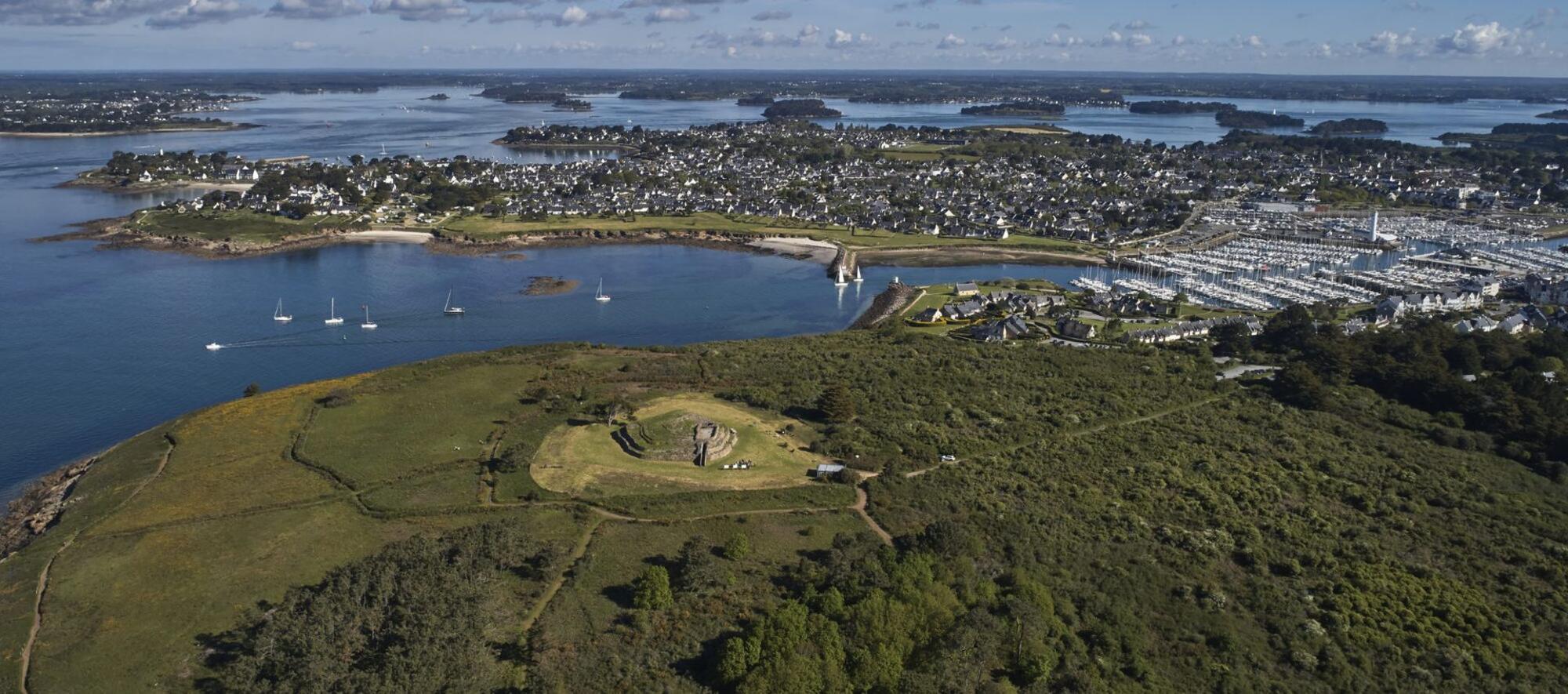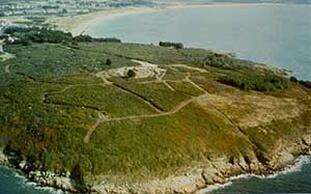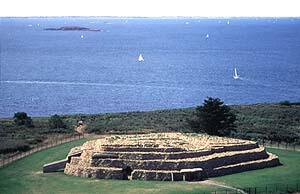- Home
- Megalithism in Morbihan
- Le Petit-Mont
- At the heart of the Rhuys Peninsula
The Petit-Mont headland, with the cairn on the top, overlooks the wide, sandy beaches of the Rhuys Peninsula.
The large Petit-Mont cairn, now overlooking the sea-shore, looked out onto a wide coastal plain during the Neolithic Age.
Petit-Mont is one of the headlands forming the southern coast of the Rhuys Peninsula. The peninsula separates the Gulf of Morbihan from the Mor-Bras, a stretch of water still sheltered from the high seas by the Quiberon peninsula, Houat and Hoedic islands and a series of rocky shoals.
Arzon, the commune lying at the end of the headland, has a number of major megalithic monuments as well as the high cairn topping the Petit-Mont mound.
- By 1853, in Tumiac, the large "carnacean" barrow dominating the surrounding plains was explored and displayed a prestigious series of formal polished stone axes now presented at the Vannes museum.
- In Grah-Niol, a large passage grave with an extra lateral chamber has several decorated slabs.
- The Bilgroix gallery grave, recently excavated and in the process of being restored, is an exception among the Late Neolithic funeral architecture: the building is mostly of drystone walling and its cairn is well preserved.
In the surrounding areas, the Scalehir ornamented menhir (stele) and the Brillac dolmen in Sarzeau, and in St-Gildas-de Rhuys, the Le Net menhirs and gallery grave are also of interest.


